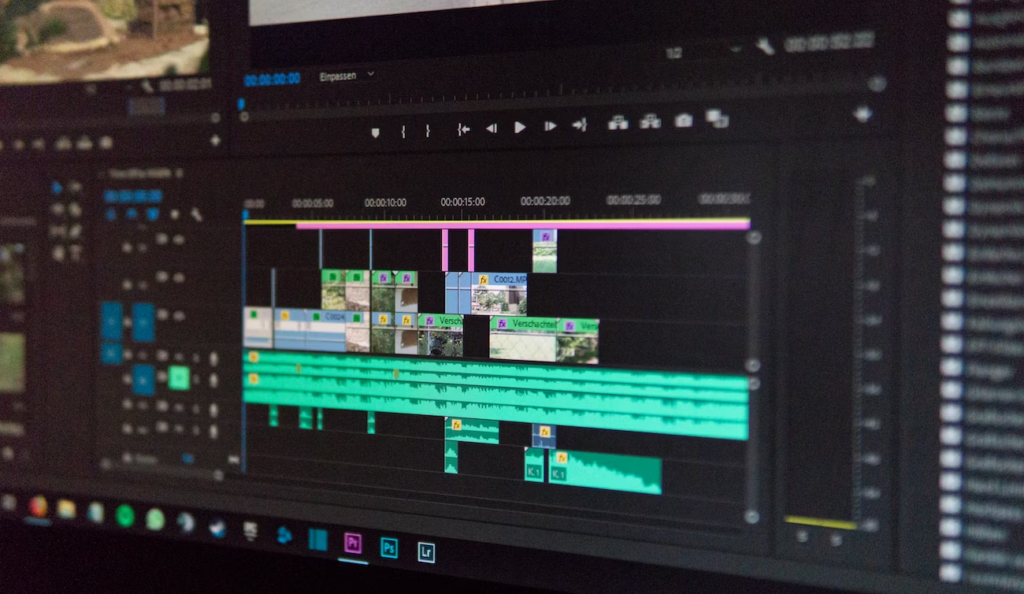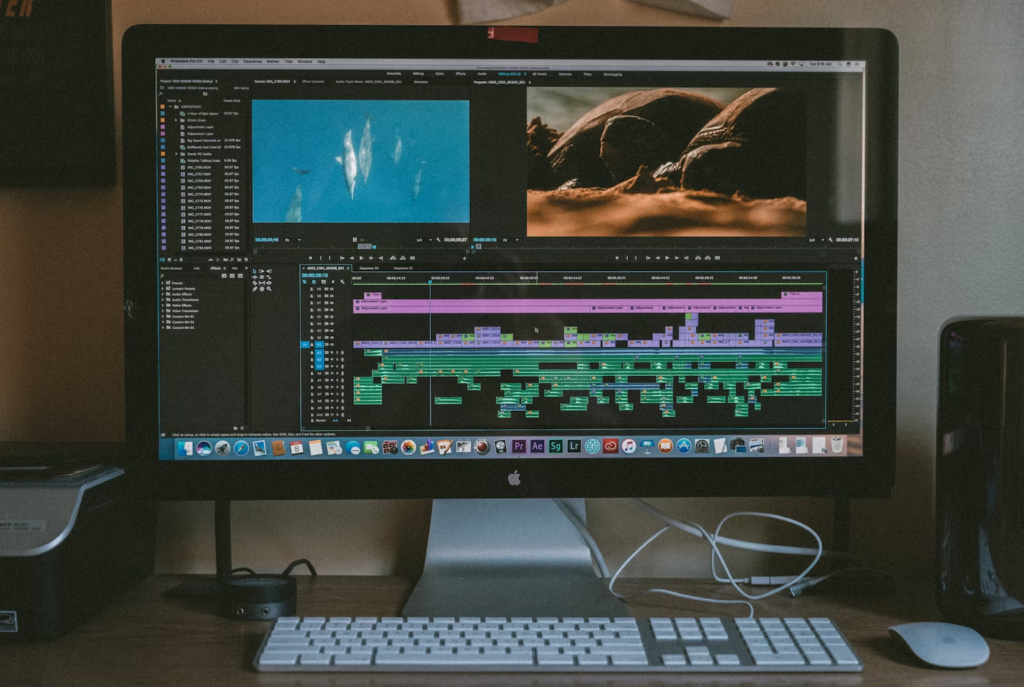Unless you’ve lived in seclusion, the buzz around artificial intelligence (AI) has likely reached your ears. With the advent and widespread acceptance of ChatGPT, professionals across various fields are pondering the potential impacts of AI on their daily tasks, envisioning easier workflows and new avenues of work.

Video production stands out among the industries touched by AI. You must delve deeper into the fusion of AI and video content to understand its current landscape. While certain aspects of production have undergone streamlining through AI automation, some crucial elements still demand human intervention.
Fresh Opportunities for Creators, Marketers, and Businesses
AI-powered video dubbing, text translation, and automated transcription have become common. These technologies continually evolve and enhance their capabilities year after year.
Combined into a unified automatic mechanism, they can become an economically viable, swift, and reasonably accurate tool for video localization.
There are already products available in the market that can generate videos translated and dubbed in multiple languages, leveraging cascade speech recognition, neural machine translation, and speech synthesis modules.
Beyond these technologies, users can anticipate the development of similar solutions in the coming years to enable viewers to experience a more authentic translation of the original material. These new technologies could completely change how we translate and dub videos.
Scriptwriting
AI’s significant role in production shines particularly in scriptwriting. Condensing relevant information into a concise video script can be challenging, and AI tools prove invaluable in crafting the ideal narrative.
However, involving a human copywriter to review the AI-generated script is crucial, ensuring it avoids sounding overly robotic and injecting the necessary personality where required.
Talented copywriters offer a distinctive skill set, including a profound grasp of language subtitles, a knack for interpreting creative choices, contextual adaptation, and a collaborative approach.
Their expertise enriches video content’s impact and emotional depth, establishing a profound connection with viewers that AI cannot replicate.
Automated real-time video translation
Viewers easily spot mismatches between spoken words and lip movements, leading to declining video viewership and hindering communication effectiveness.
Advancements in lip sync technology, aligning visuals with audio, will prompt a new perspective on automated translation tools and video dubbing. This integration of the visual aspect is anticipated to enhance viewer engagement and interaction with translated video content significantly.
AI video makers
You can also expect more sophisticated tools that will further improve video creation. Currently, creating high-quality videos using AI is a straightforward process. You must start with scriptwriting, where the AI condenses your content into concise, three to four sentences per slide.
Next, you’ll need to select a template. Video makers often have many templates that suit your specific needs. Afterward, you must copy and paste your script into the script box, slide by slide.
Once done, you can enhance the visuals by adding AI avatars, text, images, videos, animations, transitions, background music, and more.The final process is generating the video with a click of a button. Once the video is ready, you can enjoy watching and editing it on your computer, Apple, or Android devices like your iPad or Samsung flip phone.
Voiceovers
Voiceovers are common in many videos, and AI has streamlined the process by offering instant audio based on provided text. Though it may stumble on pronunciations of non-dictionary words, this remains a popular application of AI in modern production.
Here’s the gist: AI employs speech synthesis models to create top-notch, natural-sounding voiceovers significantly faster than human actors. It accelerates production, facilitating swift iterations and experimentation.
AI algorithms such as YOLO object detection, trained on extensive data, mimic diverse accents, tones, and styles, granting video producers a broad spectrum of choices. AI-driven voiceover tools provide a tailored experience by allowing easy adjustments to pacing, emphasis, and pronunciation, meeting specific project needs effortlessly.
AI’s speed, adaptability, and effectiveness in voiceover production empower video producers to deliver captivating content more efficiently than ever.
For those hesitant to fully adopt AI voiceovers, there’s an option to test different voices using AI tools swiftly. Previously, pre-AI, testing various voices for your video’s tone involved requesting sample audio files from multiple artists—a time-consuming process. With AI, you can significantly accelerate the testing phase.
Text-to-speech models
Text to speech models have excelled in replicating natural human speech, but most studies have concentrated on adult speech patterns.
A recent National University of Ireland study underscores the distinct differences between adult and child speech, revealing a narrower range of variations in the latter. However, the study’s findings bolster confidence in advancements in this domain.
You can anticipate a notable shift this year. Innovations include automated video translation and dubbing systems to introduce synthesized voices tailored for children, teenagers, and older people. This expansion should cater to a broader demographic spectrum and enrich the capabilities of these systems.
Emotion detection
Understanding the emotional side of things is critical here. If users simply want to grasp or convey the main content of a video or translate specific parts, AI-based translation, and dubbing could be a great fit.
Yet, if you aim to bolster your business globally, you’re after top-notch quality. Here, the emotional impact of translated and dubbed videos becomes crucial. So, can AI voices genuinely capture the emotions conveyed by human voices?
The debate rages on in the scientific community regarding AI’s ability to comprehend and express emotions. Back in 2019, researchers needed help finding solid proof of this capability.
Efforts to educate AI about our emotions are ongoing, with examples like the Android robot Nikola, capable of replicating six fundamental emotions. Emotion detection tech has evolved from an experiment to a $20 billion industry.
AI keeps evolving, and experts predict that technologies will recognize basic emotions in the next few years. However, the faithful reproduction of these emotions might take another five to 10 years to develop.
Multilingual adaptability
Expanding video distribution on a global scale demands high-quality localized dubbing. However, using human voice-overs becomes financially challenging when dubbing in numerous languages. AI voices offer a solution, allowing easy production of localized voice-overs in hundreds of foreign languages.
Be it for Asia, Europe, or any continent—AI can handle professional voiceovers in multiple target languages. This multilingual capability enables efficient dubbing in languages your in-house talent might need to cover. AI voices pave the way for comprehensive global video strategies.
Subtitles and transcriptions
The idea of employing AI for subtitles and transcriptions isn’t groundbreaking. Nevertheless, it’s convenient. Simply provide a video file, and AI can generate captions and transcriptions for all the audio content.
There are a couple of things to note: AI might not accurately capture non-voice audio elements like sound effects, and it’s essential to review the automated text for accuracy. Yet, even with these checks, using AI for transcriptions saves considerable time and dramatically improves accessibility.
Analytics
AI can delve into your video analytics, offering insights into the effectiveness of your current video marketing strategy. These insights could be as detailed as discovering that videos perform best when starting with a product shot or that an optimal video length is around 14 seconds.
If you’ve been publishing video content without analyzing the results, AI can assist in understanding your performance. It enables experimenting with future content to enhance and refine your strategy.

More Breakthroughs on the Horizon
AI technology is not perfect, but even in its current state, it has brought many positive changes to different niches and industries — video production included. To sum up:
- AI is capable of video dubbing, text translation, and automated transcription. These AI-powered tools keep getting better each year. When they work together, they become a fast, cost-effective way to localize videos with impressive accuracy.
- Artificial intelligenceI is improving, and soon, it might understand basic emotions. But accurately replicating these emotions could take five to 10 more years to perfect.
- AI isn’t flawless, but it’s already impacting various industries, like video production. People can expect more advancements in the next few years.
From how things are, there’s no denying that the future is only looking brighter for AI and its users. In the next five to ten years, the world will witness even more captivating breakthroughs to streamline business processes and improve working methods.

.webp)










